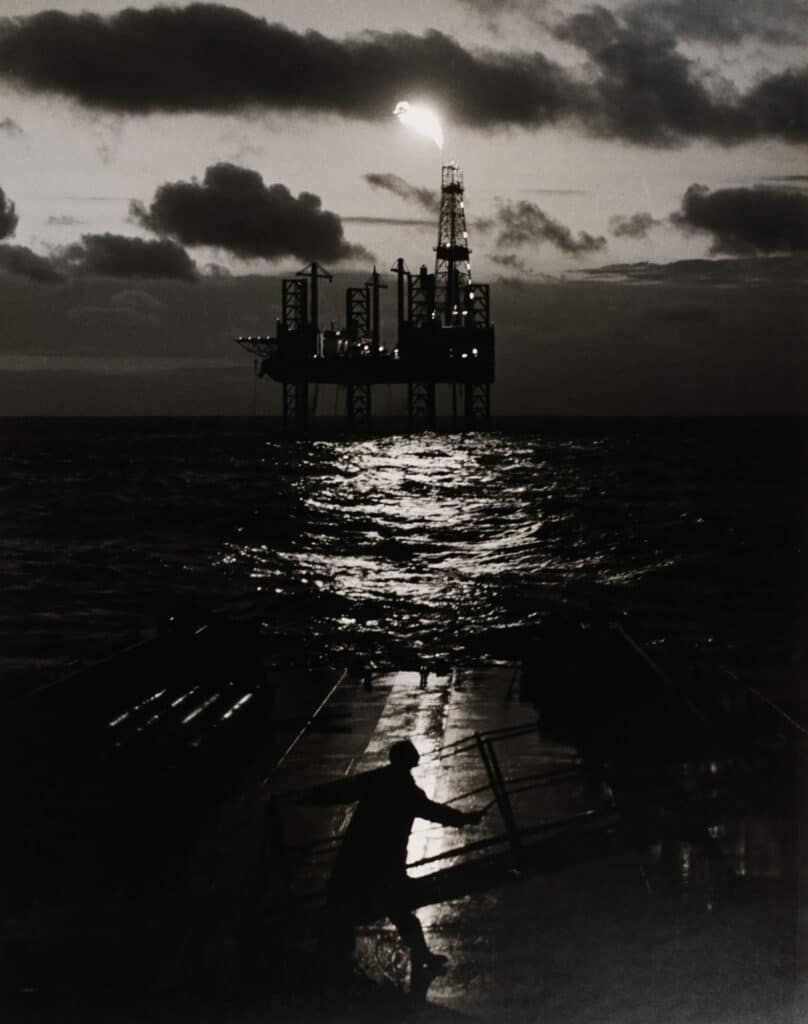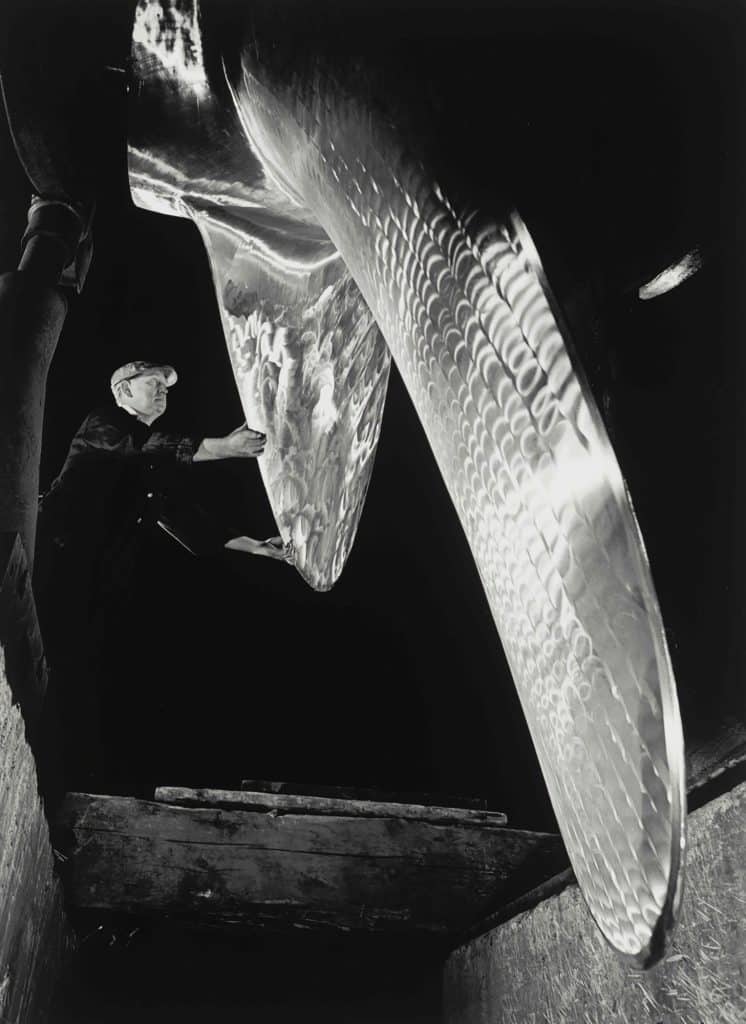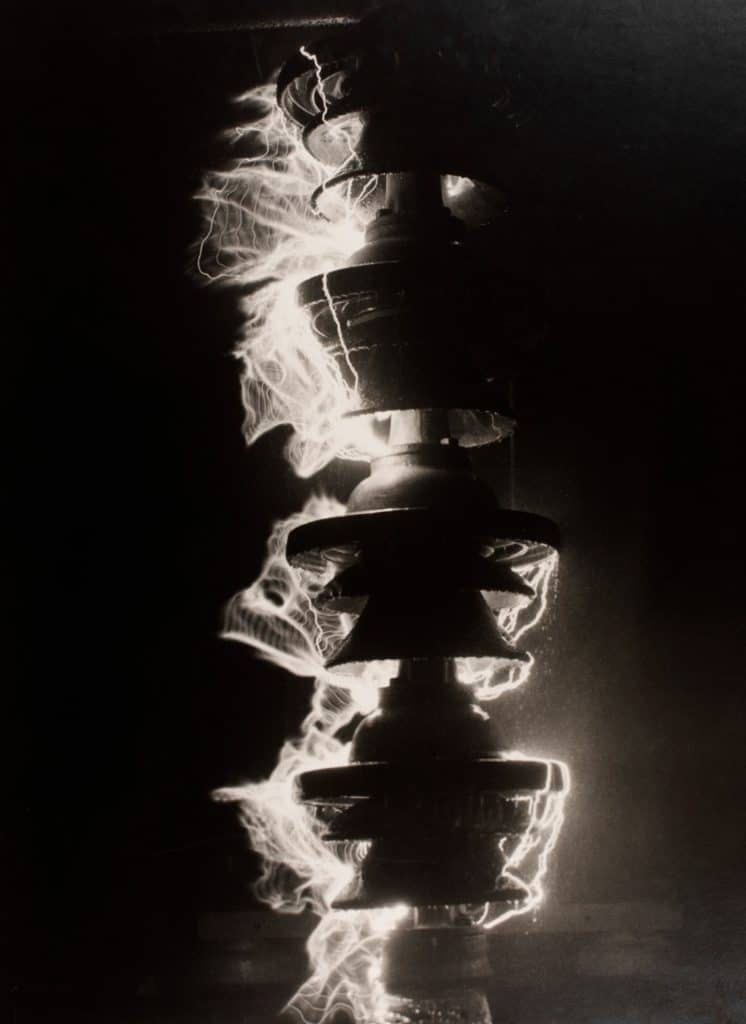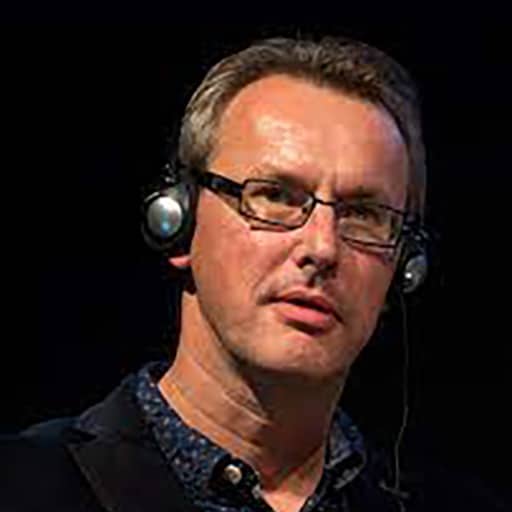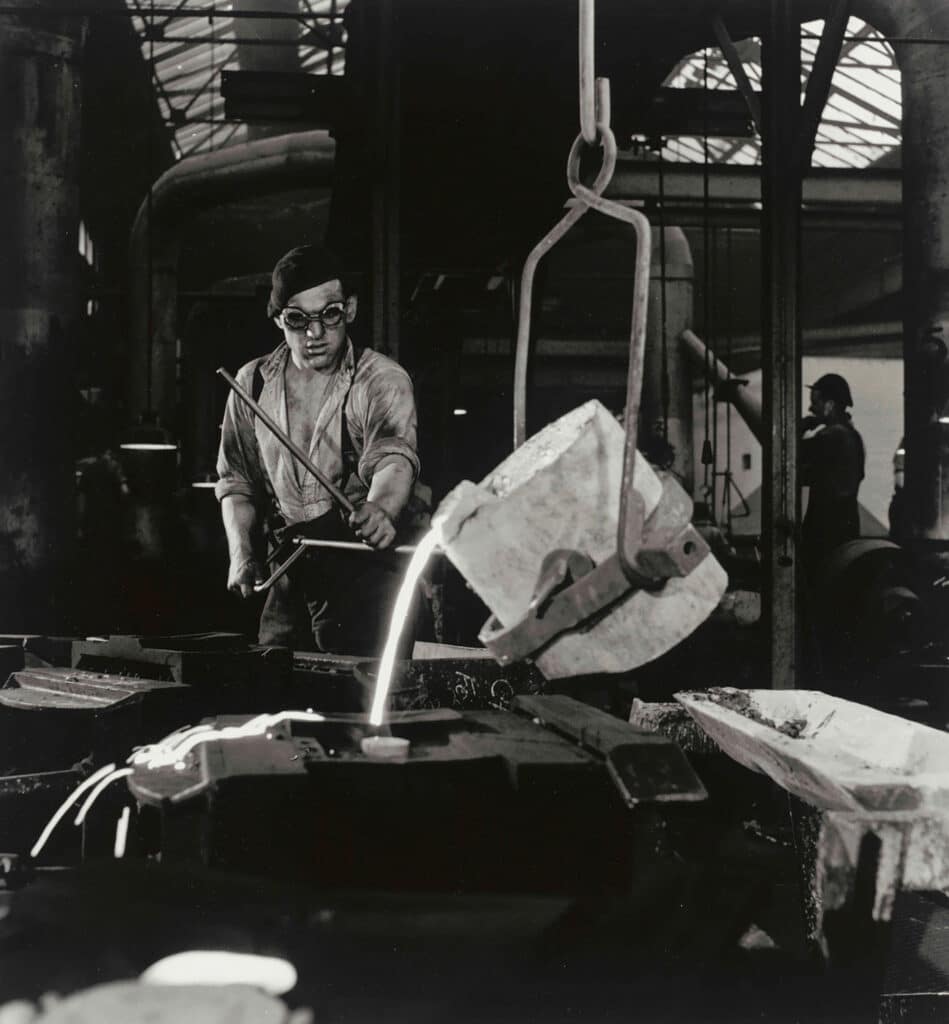
In 1963, Harold Wilson gave a speech to the Labour Party Conference. He talked about a new Britain forged in the “white heat of technology”, a world where science would make it “…physically possible, for the first time in human history, to conquer poverty and disease, to move towards universal literacy, and to achieve for the whole people better living standards than those enjoyed by tiny privileged classes in previous epochs”.
The following year Harold Wilson’s Labour Party defeated the Conservative Party at a general election, ousting the old Etonian prime-minister Alec Douglas-Home (one of 20 Old Etonian prime-ministers the UK has had), and setting in motion a period of radical social, economic, and cultural change.
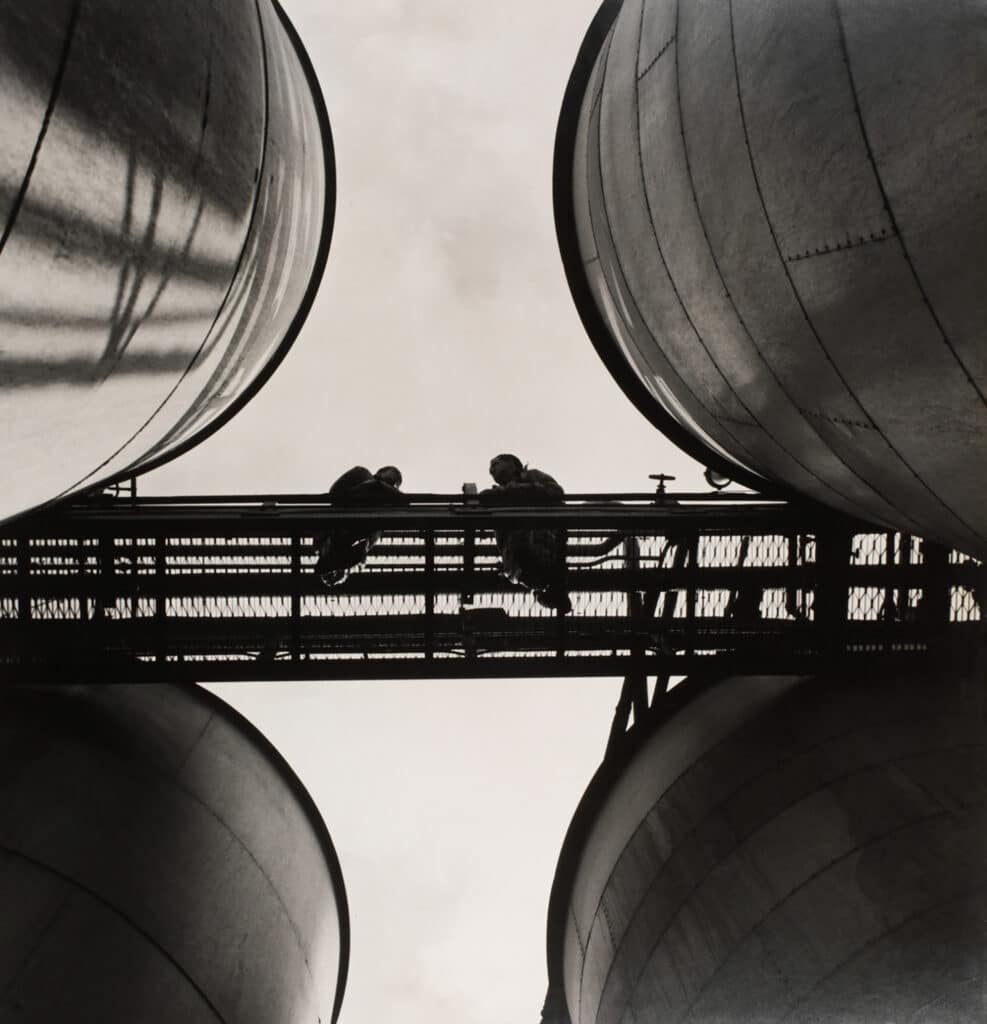
If Harold Wilson is synonymous with the “white heat of technology”, then Maurice Broomfield is its photographer. His images of laboratories, factories and testing room capture the optimism and power that fuelled Wilson’s vision.
It’s an optimism that he was happy to be part of photographically. It wasn’t an optimism he wanted to be part of directly. Born into a working class family in Derby, as a teenager his life was set out for him. He would work in the local Rolls Royce factory, and bring up children with the girl his mother had decided he would marry.
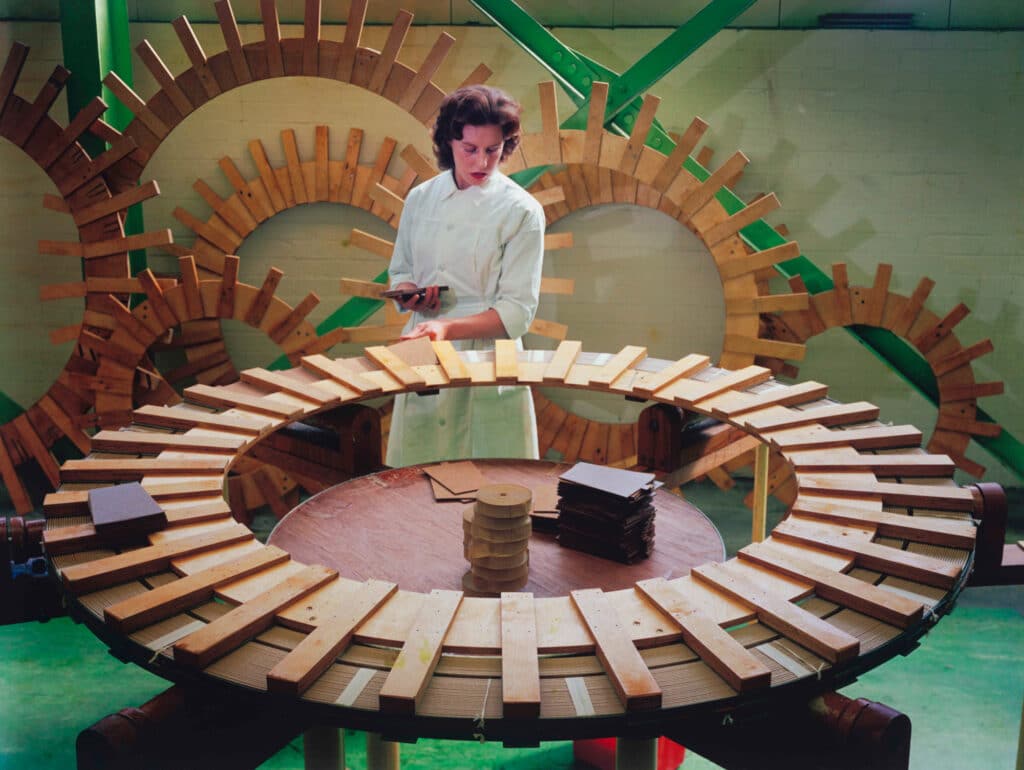
Broomfield wasn’t having it. Instead he studied photography at night school, left his job at Rolls Royce, and escaped the factory floor to exercise his new found photography talent.
The images on display at London’s Victoria and Albert Museum capture that talent in full. They show his workbooks, his contact prints, his commercial diaries, the cameras he used, and the images that he made.
The stars of the exhibition are the large format colour prints he made. His image of the woman at the nylon factory is a wonder to behold. She stands before the weaving loom preparing a warp. She wears a white dress for the factory floor, the lower half covered by an oil stained apron. She bends over the loom, arms grasping ends of the nylon, her head resplendent in red head scarf as she stands in her high heeled shoes. Whether this was her usual attire, she was dressing up for the camera, or this was something directed by Broomfield, is a question. What is for sure is that he had an attention to detail, and was known to have painted workers’ shoes if it would make for a more striking image…
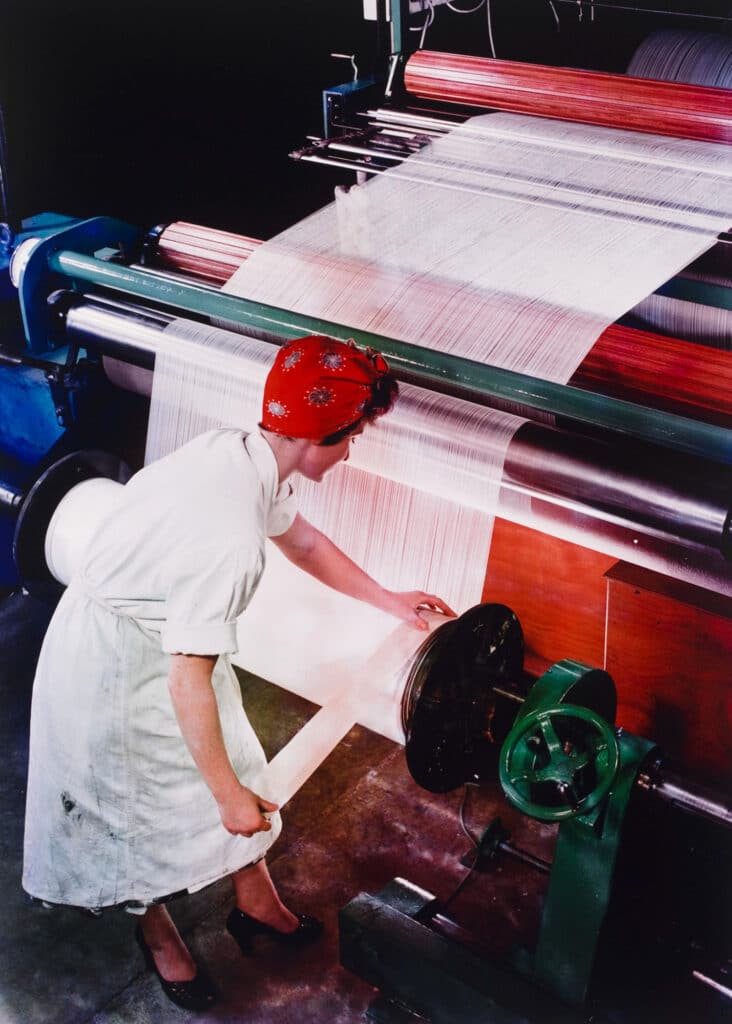
The nylon is brightly lit, standing out with her apron and headscarf against the darkness of the factory floor. It’s an image where labour and the factory are made epic, romantic, and cinematic. The lighting and the depth of the colour is reminiscent of a Powell and Pressburger film, the statuesque pose of the woman and the dynamic angles of propaganda pictures of the Soviet Union under construction in the 1930s.
The reality of this world is something that Broomfield really didn’t want to be part of; that’s why he studied photography and got the hell out of Derby. He likes the idea of it enough to photograph using visual strategies that transform his industrial locations into giant stages where he can take himself and his players into the past, the future, and the fictional.
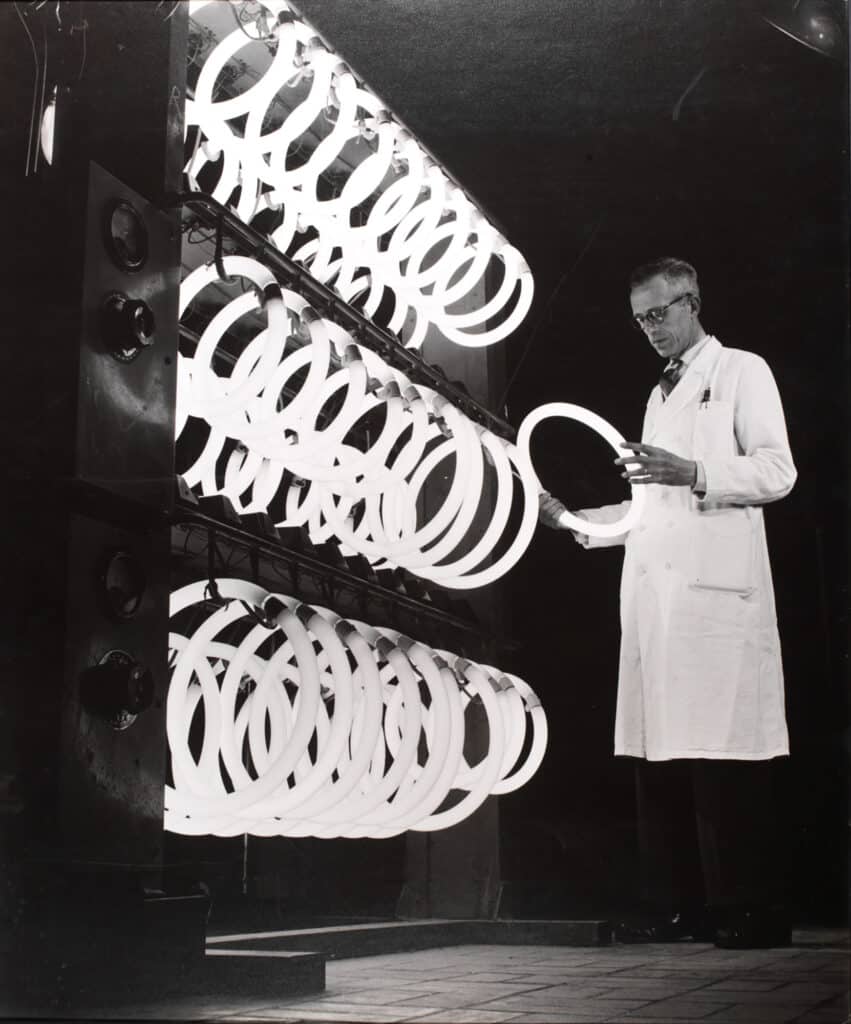
His image of a man testing fluorescent tubes at the Philips factory in Eindhoven in 1958 shows more immaculate lighting. Photographed from low down, the glow of the fluorescent tubes and the white of the tester’s lab coat stand out against the black background (Broomfield would often photograph at night for more dramatic lighting. The tubes are almost sculptural, the deadpan tester looking deep into the O of the tube he is holding as though he is looking into a vision of the future. We’re not a million miles from Metropolis here.
This image links into the kind of ambiguous images that Mike Mandel and Larry Sultan featured in their Evidence book. The man spraying foam insulation in full boilet suit, rubber boots, and visored helmet is straight out of the kind of sci-fi magazine George McFly read in Back to the Future.
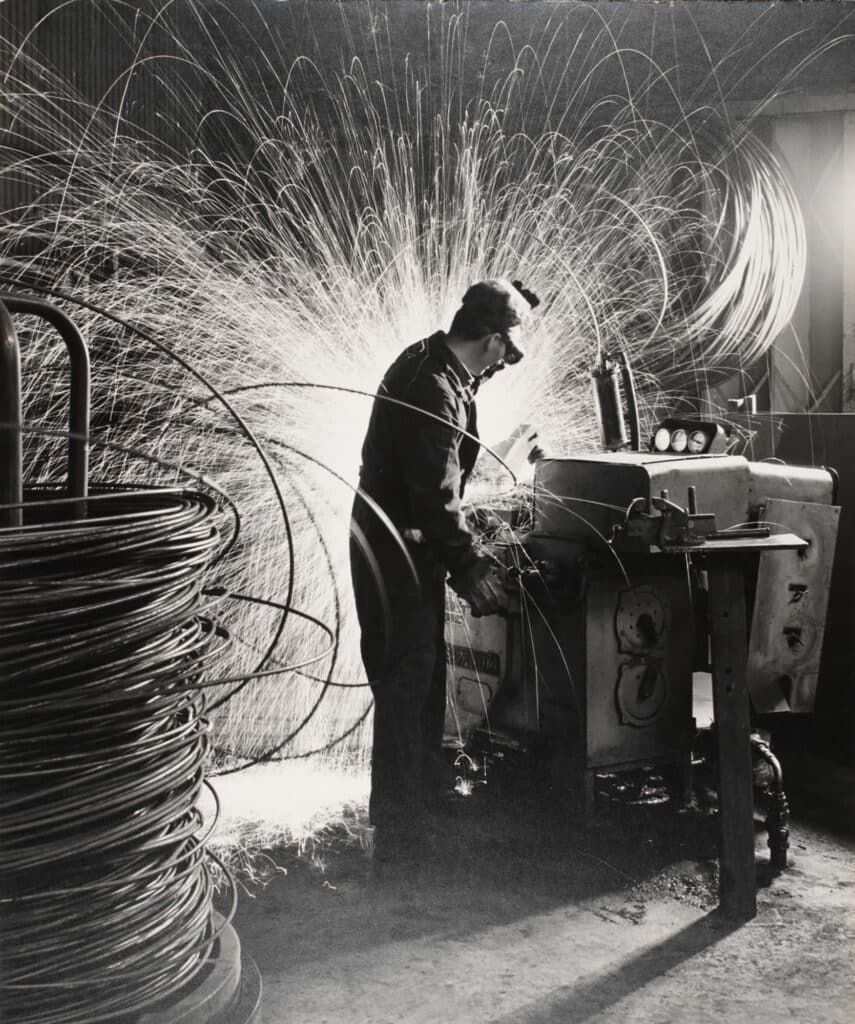
This image also ties into the idea of the industrial – the factory, the machinery, the product, the process – as an artwork in itself. Broomfield is photographing the ready-mades of the industrial age. He is photographing people looking at things with both awe and puzzlement as in his image of a Woman Examining a Sample at Shell International.
This exhibition accentuates on those ideas of the romantic and the epic both through the framed prints on the wall and the supporting material laid out in vitrines along the exhibition space. The bearings, propellors, and pipes that he photographs have a scale that is part of the enormity of what his photographs are intended to represent; the scientific transformation of the world for the benefit of men and women of all backgrounds.
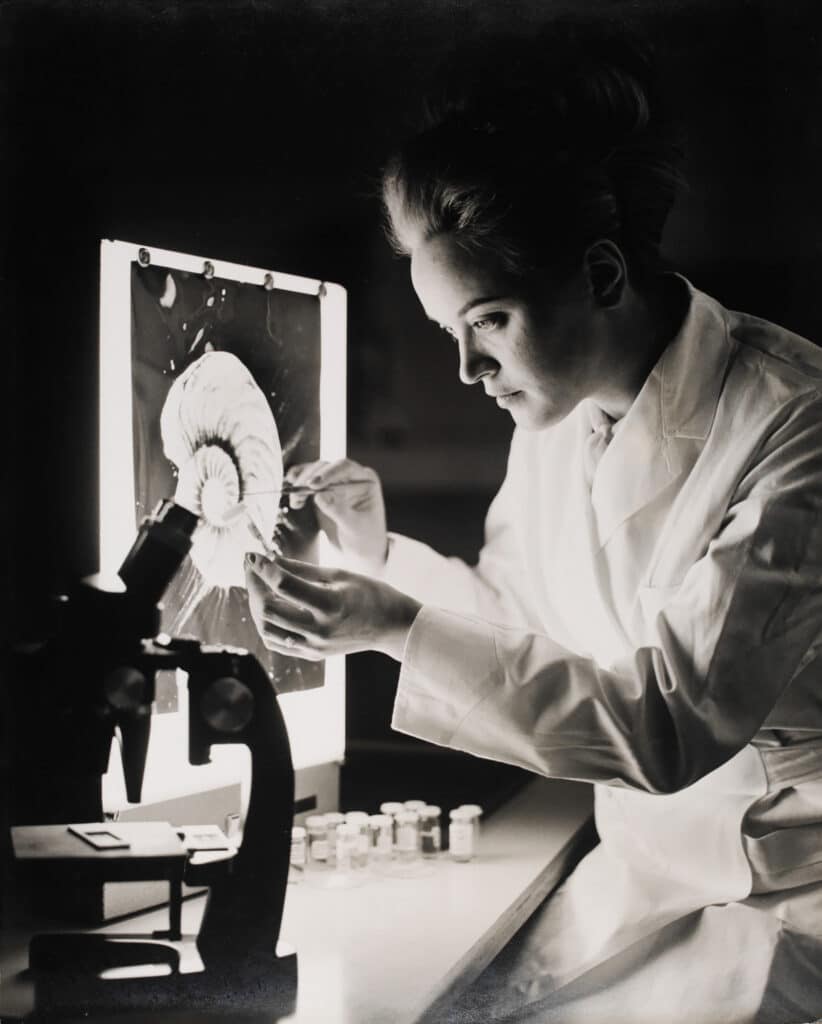
It is also hopelessly unrealistic. When Harold Wilson made his speech, he hinted at the transformations that were yet to come, he had half an eye on the massive deindustrialization that was fast approaching. A few years after Broomfield made these images, Berndt and Hilla Becher were photographing the decaying collieries, steelworks and industrial facades of the Ruhrgebiet, and by the 1980s most of the companies Broomfield had worked for had closed, rushed to their deathbeds by the liberal policies of prime-minister Margaret Thatcher.
There’s a footnote in the exhibition to this with images of closed factories, of weed-strewn lots where once the factories of Rolls Royce or British Nylon Spinners had stood. Broomfield’s images are not a history of the factories, and the era of industrialization that they stood for. If they were, they would examine more complex ideas on the environment, labour rights, and colonialism to name but a few.
Instead they are a far more important record; a record of the optimism of the time and the idea that there was and could be such a thing as progress. And that it could benefit all mankind, not just those who were born into privilege. When Wilson came to power, he was coming into a position where the three previous prime-ministers had all been to the same school. He would be shocked to discover that almost 60 years after he came to power, two out of the last three prime-ministers also went to that same school. It would be great to have some of the optimism that Wilson’s speech was filled with. It would be even better to have some of the progress that he promised. Perhaps that’s too much of a hope, so instead we can look back at the pictures of Maurice Broomfield and think of a time when there was the idea that things could only get better.
“Maurice Broomfield: Industrial Sublime” at the Victoria and Albert Museum (Room 100, Photography Centre – The Bern and Ronny Schwartz Gallery), Cromwell Rd, London SW7 2RL, Royaume-Uni, until Sunday, 6 November 2022.

